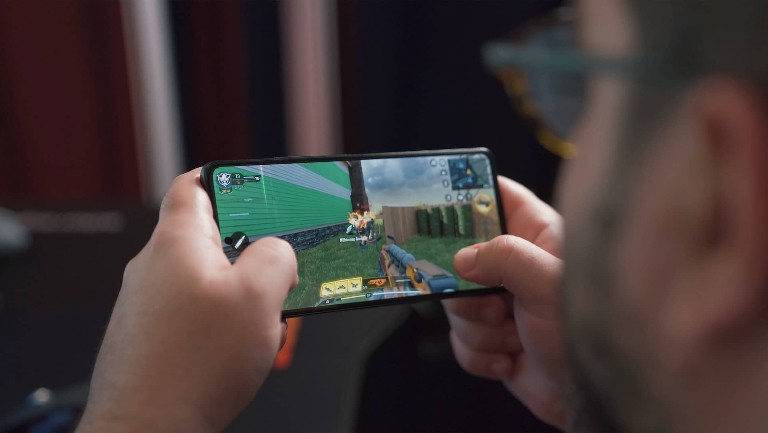Internet
Mobile
Devices
Support
Refer a friend
Moving to Malta
5G: What it is and how it works
31 January 2023

It’s been on everyone’s lips since 2019 and a hot topic within the telecoms sector and beyond. Representing the new standard of wireless mobile telecommunications, 5G focuses on improving connectivity and enhancing speed and quality. And while its benefits have been touted far and wide, it has also raised several questions.
With this in mind, here you’ll find all the answers as we delve deeper into the technology that is ushering us into a world of unprecedented possibilities.
What is 5G?
Offering speeds up to 100 times faster than 4G, 5G is the 5th generation of wireless networks. It has the ability to connect everyone and everything together, from people to machines, objects and devices, bringing us together and enabling us to create a revolutionary global network.
What’s the difference between 4G and 5G?
While 1G was all about providing basic voice capabilities, 2G introduced us to messaging apps and browsing simple websites. Then 3G provided the core network speeds required to launch the very first smartphones. On the other hand, 4G LTE gave us access to mobile video, a range of connected devices and location services – all of which we enjoy on a daily basis.
By relying on the same technology as 3G, 5G is an evolution of 4G that can switch between networks to give you connection speed and reliability depending on your handset’s data requirements.
How does 5G work?
Like most wireless communications systems, 5G uses radio frequencies to carry information through the air, however, its cutting-edge technology takes mobile broadband services to an entirely new level. This is possible thanks to its unique air interface design techniques, like self-contained TDD subframes and OFDM principles, which allow for wider bandwidths, such as Sub6GHz and mmWave spectrum usage.
It may all sound like a foreign language, but in essence, it means that it uses much higher frequencies that are less cluttered and while similar in principle to 4G LTE, the advanced features of 5G make it faster and better suited than its predecessor, allowing us access to areas, such as mission-critical communications and connecting massive IoT (Internet of Things) networks like never before.

What are the advantages of 5G?
From offering higher speed, lower latency and greater capacity, when you’re connected to a 5G network, you benefit from quicker downloads and much lower lag, improving how you live, work and play. This in turn can help you access new and improved experiences, particularly in areas of IoT, virtual reality (VR) and artificial intelligence (AI).
By delivering higher speeds to mobile users who are on the move, you won’t notice any difference between fixed or mobile internet, while by making use of optimal frequencies, you’ll get to experience better coverage when indoors. Not to mention that thanks to increased traffic capacity, there’s less congestion which translates to a steadier connection.
With 5G you can share your photos and videos in no time and enjoy crystal-clear video calls, while you can stream your series and movies in HD without any interruptions. For gamers, 5G’s reaction time is 10 times faster, so you can say goodbye to slow-motion gaming and hello to a more immersive augmented reality experience.
On a larger scale, 5G has the power to make businesses more efficient and even help revolutionize certain industries. Imagine production lines so predictive that they can prevent interruptions before they occur, boosting the manufacturing industry in the process. Or thousands of connected devices gathering and sharing information in real-time to help reduce road accidents. Things like digitized logistics, precision agriculture and even remote healthcare can all become a reality.
How does 5G affect my home and mobile internet service?
With 5G’s increased speed and reliability, your home internet service can get a major upgrade, particularly with Hybrid or Fixed Wireless Access technologies. These could also serve as a great solution for rural areas where fixed access can be difficult and at times costly to deploy.
Meanwhile, when it comes to mobile technology, 5G promises to be up to 100 times faster than 4G, which means downloading a movie would only take minutes instead of an hour. Just keep in mind that not all phones are compatible. To make use of this next-generation network, your mobile must have an internal chipset which is able to transmit and receive 5G signals. Take a look at these 5G & 5G-enabled smartphones if you’re looking to ditch your current one for an upgraded version.
Is 5G available now?
The 5G rollout was initially relatively slow, with proof-of-concept deployments in Europe starting in late 2019. Yet, today, several global and local operators have started launching new 5G networks, while all main phone manufacturers have been commercializing 5G phones for some time now. And as the 5G ecosystem consolidates even further and more handsets become available, deployment is expected to be way broader on a commercial scale.
Locally, GO has been working hard to build a digital future for Malta, investing in an ambitious rollout project of delivering nationwide coverage by 2023 and since 2021, we have been offering the latest generation of mobile technology to GO pay monthly customers who have 5G-enalbed handsets.
Bonus: 5G myths debunked
- Myth 1: 5G poses a health risk – some have raised concerns that exposure to 5G radio waves may threaten our health. This is nothing new as 2G, 3G and 4G have all been accused of the exact same thing in the past. With strict standards in place, health authorities in several countries have stated that exposure poses no major threat.
- Myth 2: 5G spread COVID-19 – a major conspiracy theory that made the rounds at the height of the pandemic, there is no proven link between 5G and COVID-19. As we all know, COVID is spread through respiratory droplets and direct contact with an infected individual and not through radio waves or mobile networks.
- Myth 3: 5G uses more energy – actually, 5G is the first mobile standard to integrate optimized energy consumption into its very design, so it isn’t the energy-intensive technology with a high carbon footprint as it is wrongly perceived. What’s more, not only do 5G antennas consume half the energy when compared to their 4G counterparts, but these only transmit data when and where is needed.
So, wondering how can you get 5G connectivity? Experience the technology with uncapped and far superior broadband speeds, giving you smooth streaming, seamless gaming and uninterrupted browsing among other things. Take a look at our pay monthly plans and hybrid plans that offer a range of additional perks at a great price.